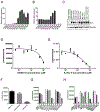Myc and Loss of p53 Cooperate to Drive Formation of Choroid Plexus Carcinoma
- PMID: 30885981
- PMCID: PMC6497574
- DOI: 10.1158/0008-5472.CAN-18-2565
Myc and Loss of p53 Cooperate to Drive Formation of Choroid Plexus Carcinoma
Abstract
Choroid plexus carcinoma (CPC) is a rare brain tumor that occurs most commonly in very young children and has a dismal prognosis despite intensive therapy. Improved outcomes for patients with CPC depend on a deeper understanding of the mechanisms underlying the disease. Here we developed transgenic models of CPCs by activating the Myc oncogene and deleting the Trp53 tumor suppressor gene in murine neural stem cells or progenitors. Murine CPC resembled their human counterparts at a histologic level, and like the hypodiploid subset of human CPC, exhibited multiple whole-chromosome losses, particularly of chromosomes 8, 12, and 19. Analysis of murine and human CPC gene expression profiles and copy number changes revealed altered expression of genes involved in cell cycle, DNA damage response, and cilium function. High-throughput drug screening identified small molecule inhibitors that decreased the viability of CPC. These models will be valuable tools for understanding the biology of choroid plexus tumors and for testing novel approaches to therapy. SIGNIFICANCE: This study describes new mouse models of choroid plexus carcinoma and uses them to investigate the biology and therapeutic responsiveness of this highly malignant pediatric brain tumor.
©2019 American Association for Cancer Research.
Conflict of interest statement
The authors declare no potential conflicts of interest.
Figures






References
-
- Lam S, Lin Y, Cherian J, Qadri U, Harris DA, Melkonian S, et al. Choroid plexus tumors in children: a population-based study. Pediatr Neurosurg 2013;49:331–8 - PubMed
-
- Mazloom A, Wolff JE, Paulino AC. The impact of radiotherapy fields in the treatment of patients with choroid plexus carcinoma. Int J Radiat Oncol Biol Phys 2010;78:79–84 - PubMed
-
- Mallick S, Benson R, Melgandi W, Rath GK. Effect of Surgery, Adjuvant Therapy, and Other Prognostic Factors on Choroid Plexus Carcinoma: A Systematic Review and Individual Patient Data Analysis. Int J Radiat Oncol Biol Phys 2017;99:1199–206 - PubMed
-
- Tabori U, Shlien A, Baskin B, Levitt S, Ray P, Alon N, et al. TP53 alterations determine clinical subgroups and survival of patients with choroid plexus tumors. Journal of clinical oncology : official journal of the American Society of Clinical Oncology 2010;28:1995–2001 - PubMed
Publication types
MeSH terms
Substances
Supplementary concepts
Grants and funding
LinkOut - more resources
Full Text Sources
Molecular Biology Databases
Research Materials
Miscellaneous

